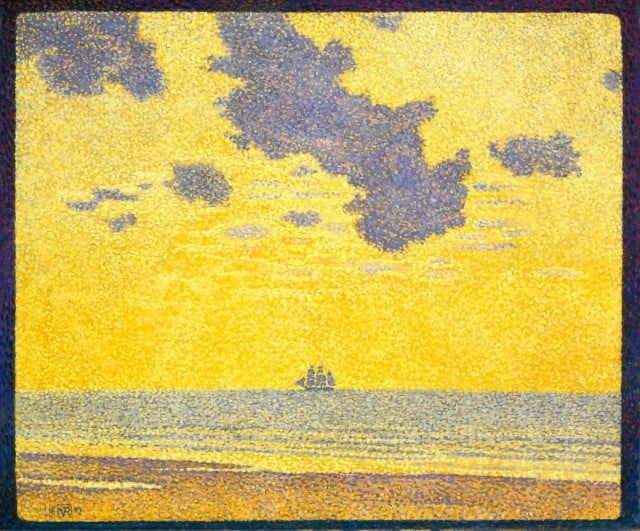Art & Exhibitions
Neo-Impressionism: Philosophy or Great Decor?
A new show reveals the profundities–and gorgeous surfaces–of the movement.

A new show reveals the profundities–and gorgeous surfaces–of the movement.


Theo Van Rysselberghe’s “Big Clouds”, painted in 1893, belongs to the Indianapolis Museum of Art, and is now on loan to a show called “Neo-Impressionism and the Dream of Realities: Painting, Poetry, Music” at the Phillips Collection in Washington. The show claims that the Neo-Impressionists – Seurat, Signac and their ilk – were profound thinkers (at least in the clichéd sense), wanting to delve deep into philosophy and symbolism. That may be true of their intentions – that old fallacy once again – but I don’t buy it as a description of what they actually achieved. I think a quote from a Phillips wall text gets nearer the truth: In 1890, the critic Felix Fénéon called Signac’s paintings “exemplary specimens of a highly developed decorative art.” I’d prefer to see Neo-Impressionism in the context of Art Nouveau, and of the fertile and daring collapse of fine art and design. That makes especially good sense of the dot-covered borders and frames that Van Rysselberghe and his fellow Neo-Imps put on their pictures, helping their works transition into the decors all around them. Imagine “Big Clouds” in a room full of Tiffany’s Favrile glass, and it starts to come into its own.
For a full survey of past Daily Pics visit blakegopnik.com/archive.